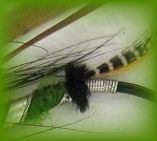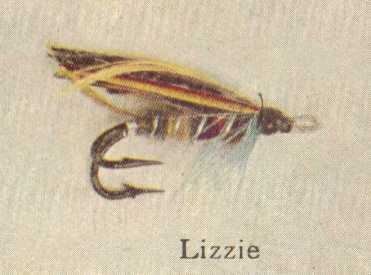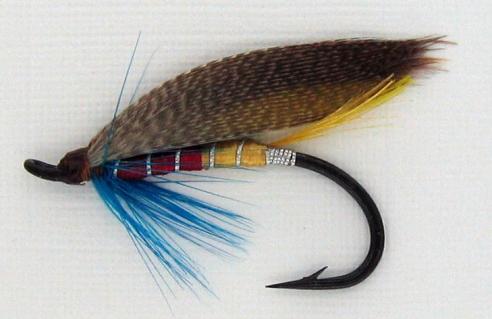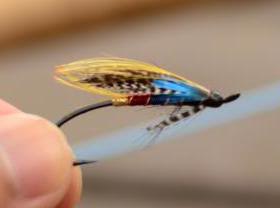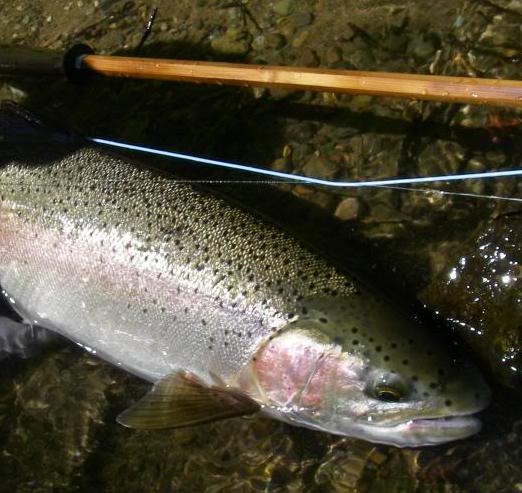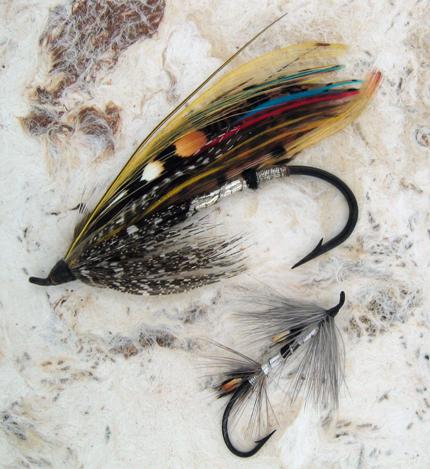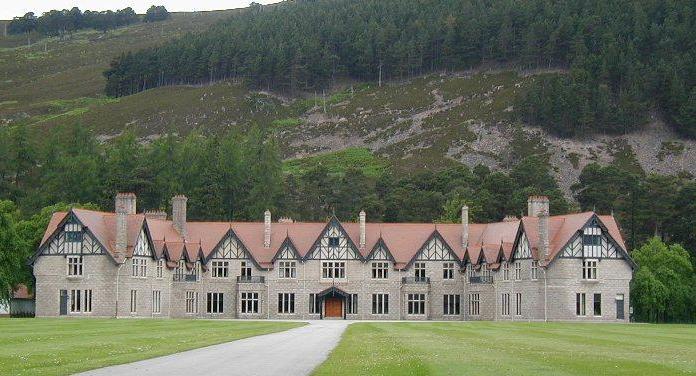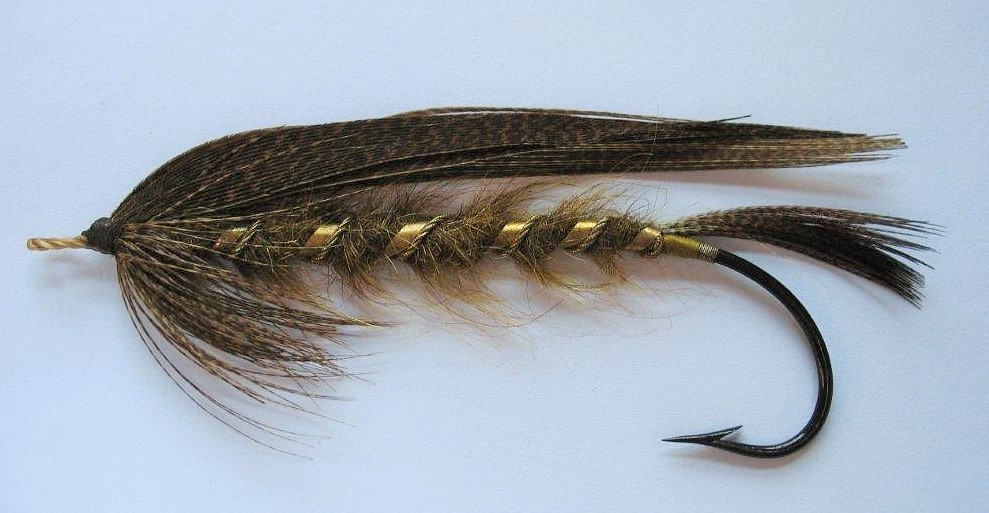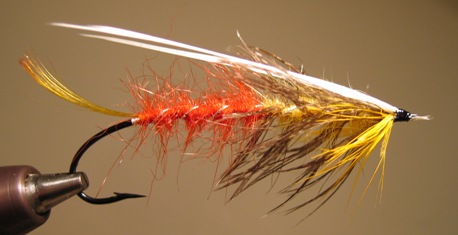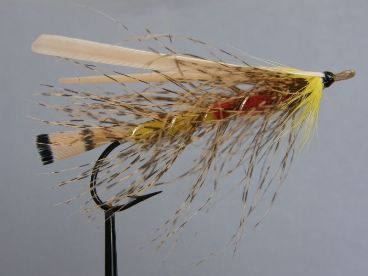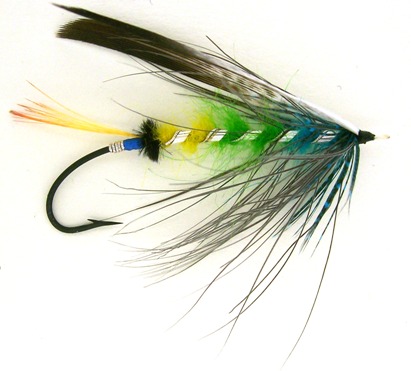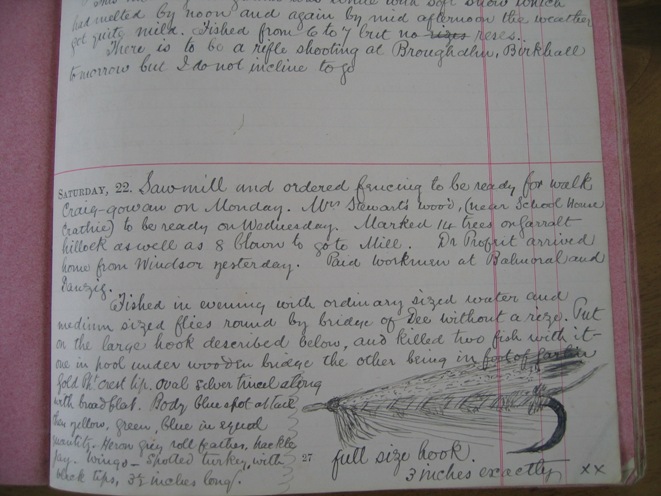 |
 |
|
On this page Lizzie, Logie, MacIntyre, Magic, Mar Lodge, March Brown, Marlie, John Michie flies, Minister of Drumoak (see Dr. Corbet). Please scroll down. Lizzie Kelson – The Salmon Fly, 1885 Tag: Silver twist. Tail: A topping. Body: Green, yellow, violet, and crimson seal’s fur equally divided. Ribs: Silver tinsel (oval). Hackle: Blue hackle, from yellow fur. Wings: Tippet strands; gallina, swan dyed light blue, yellow, and crimson, mallard, and a topping. Horns: Blue macaw. A good bright water fly in summer on the Kelson attributes the pattern to William Garden.
Logie
Tied for fishing with by Guy Heard WM Tag: Silver thread. Tail: Small topping. Body: Yellow silk floss one third, claret silk floss to head for the rest. The yellows to be the same shade as yellow swan. Hackle: Blue, only round shoulder. Wings: Yellow swan under; mallard strips over. Head: Black Limericks, sizes 6, 7, and 8, used for salmon and grilse. Is virtually a plain “Gordon,” as is the body is almost identically the same. This fly stands unrivalled in the Aboyne and Ballater districts during the later half April and the moth of May, if the water is anywise small. As no fly can approach the “Gordon” for general use from Banchory to Ballater, so this small representation of it occupies during the period we have stated, a like unique position. WM describes this pattern as “an old
Kelson – The Salmon Fly, 1885 Tag: Silver twist. Tail: A topping. Body: Dark claret silk. Ribs: Silver tinsel (oval). Throat: Light blue hackle. Wings: Two strips of swan dyed yellow, veiled with broad strips of mallard. Sides: Jungle. An excellent summer pattern in dull weather on the Kelson attributes the pattern to William Brown. Pryce-Tannatt - How to Dress Salmon Flies, 1914 Tag: Silver tinsel. Tail: A topping. Body: First two-fifths, pale primrose floss; remainder ruby red floss. Ribs: Fine oval silver tinsel Throat: A pale blue hackle. Wings: Yellow swan strips (set upright) slightly covered by brown mallard strips. Hook: ¾ to 1⅛ inches. Hardy – Salmon Fishing, 1907 Tag: Silver tinsel. Tail: Toping. Body: Dark claret floss. Ribs: Silver tinsel. Throat: Light blue. Wings: Yellow swan veiled with mallard. Sides: Jungle cock. Head: Black. “Jock Scott” – Greased Line Fishing for Salmon, 1936 Tag: Silver wire. Tail: Crest G.P. Body: Claret floss silk Ribs: Silver Hackle: Light blue Wing: Under yellow hen wing, mallard over Cheers: Jungle cock. Frederick Hill – Salmon Fishing – The Greased Line on Logie (for March) Tag: Silver tinsel. Tail: Topping. Body: Half yellow, half red silk with round silver tinsel. Hackle: Greeny blue. Wing: Yellow swan covered with mallard. Logie (for April) Tag: Silver tinsel. Tail: Topping. Body: Silver tip, remainder red silk with silver tinsel oval or embossed. Hackle: Pale blue. Wing: Yellow swan covered with mallard.
MacIntyre or McIntyre
Walbran – British Angler – First Series, 1889 Tag: Silver twist, and bright yellow floss. Tail, A topping, and Indian crow. Butt: Black herl. Body: Three turns of very light orange floss silk, remainder in two sections, - first, scarlet seal’s fur; second, medium blue mohair, picked out at the shoulder; the first section to be the longer; over these rib with four turns of broad silver tinsel and treble twist. Hackle: Magenta from the second turn of scarlet fur; at the shoulder, greenish blue hackle with above it black heron’s hackle of long fibre: Wing: Under, two tippets, back to back, extending to butt; two long jungle fowl’s feathers over them; sides, mixed strips bustard, golden pheasant’s tail, peacock’s wing; red, green and blue swan, with two large slips of very dark mallard. Cheeks: large light blue chatterer; feelers, two each or blue, red, and yellow macaw, and two toppings over all. Head: Black wool
Hardy – Salmon Fishing, 1907 Tag: Silver tinsel, golden yellow floss. Tail: Topping, Indian crow. Butt: Black herl. Body: Three turns orange floss; four turns each of red, dark orange and light blue seals fur. Ribs: Silver tinsel. Hackle: Magenta. Throat: Pale blue; black hackle. Wings: Two jungle cock enveloped by two tippets; golden pheasant tail; bustard; peacock wing; yellow, red and blue swan; mallard; topping. Cheeks: Chatterer. Horns: Red and blue macaw. Head: Black wool.
Magic
Tied in hand by Arian Cortes
After Arian worked his "Magic" !
WM Tag: Gold twist. Tail: A small topping. Body: Black, blue, and claret silk floss, in equal proportions – the blue of the Chatterer shade. Gold flat worm, five turns. Hackle: Black cock; alight, and extending through the black part of the body only. Throat: Teal, sparely. Wings: Mixed bustard and teal in same proportions, golden pheasant topping. Sides: Blue Chatterer. Head: Black. Double Limericks, sizes Nos. 6 and 7. Regarded principally as a grilse lure, is a first-rate clear water fly, and used more generally in dull than bright weather. It is, however, a good, fair all-round killer. WM describes this fly as “one of our own patterns”.
Mar Lodge
Vintage Mar Loge with a low water grub version as sold by JS Sharpe Mar Lodge is a large sporting lodge 5 miles west of Braemar the upper most of the Deeside villages, it was built for the Duke of Fife in 1885 and now owned by the National Trust for
Mar Lodge - quite a nice little holiday home...
Kelson – The Salmon Fly, 1885 Tail: A topping, and points of two small Jungle above, back to back. Butt: Black herl. Body: In three sections: No. 1 and No. 3 of silver tinsel; centre of black silk. Throat: Gallina. Wings: Underwing of married strips of swan dyed yellow, red, and blue; strips of peacock wing, summer duck, grey mallard, dark mottled turkey, golden pheasant tail, and a topping. Sides: Jungle. Horns: Blue macaw. Head: Black wool. A favourite
Kelson – Land & Water Cards c 1902 John Lamont hit on a grand idea at the time when he invented this pattern and forwarded a specimen to Tag: Silver twist (oval). Tail: A topping, and points of jungle cock (back to back). Butt: Black herl. Body: In three equal sections, No. 1 and No. 3 of silver tinsel, centre of black silk. Throat: Gallina Wings: Underwing of married strips of swan dyed yellow, red and blue; strips of peacock wing, summer duck, grey mallard, dark mottled turkey, golden pheasant tail and topping. Sides: Jungle. Horns: Blue macaw. Head: Black wool.
From an early JS Sharpe catalogue:
Salmon “Grub” Flies for low water fishing – A new idea in salmon flies. These flies are wingless tied on fine long shank hooks with upturned eyes. There are three sets of hackles – viz., at head, centre, and tail. These hackles impart a lively motion to the fly by opening and closing, making this fly a deadly one in clear water when the usual winged flies are too conspicuous. No. 9. - Mar Lodge hackles and body with jungle cock at head and tail
Pryce-Tannatt - How to Dress Salmon Flies, 1914 Tag: Silver tinsel. Tail: A topping and a pair of jungle cock feathers (back to back). Butt: Black herl. Body: Fat silver tinsel, jointed at the middle with two or three turns of black floss. Ribs: Narrow oval tinsel. Throat: Speckled Gallina. Wings: Mixed - tippets in strands; “married” strands of white swan, bustard, florican, cinnamon, mottled grey and mottled brown turkey tail and golden pheasant tail. Sides: Broad strips of barred summer duck. Cheeks: Jungle cock; a topping over all. Horns: Blue and yellow macaw. Hook: 1¼ to 3 inches. Hardy – Salmon Fishing, 1907 Tag: Silver tinsel. Tail: Topping; jungle cock. Butt: Black herl. Body: In three equal parts; numbers one and three of silver tinsel; number 2 light black floss. Throat: Guinea fowl. Wings: Yellow, red and blue swan, strips of peacock wing; summer duck; grey mallard; dark mottled turkey; golden pheasant tail; topping. Sides: Jungle cock. Horns: Blue macaw. Head: Black.
March Brown A nice March Brown tied (in the P-T Style) by Geert
A fantastic vintage 9/0 (yes huge for a fly I considered a low-water fly!) - this in exceptional example from Ian Letham's Collection
Kelson – The Salmon Fly, 1885 Tag: Gold twist. Tail: A topping. Body: Silver monkey’s fur and a little dirty-orange seal’s fur, mixed together. Ribs: Gold tinsel (oval). Throat: Partridge hackle. Wings: Hen pheasant tail. An old standard on the Pryce-Tannatt - How to Dress Salmon Flies, 1914 Tag: Silver tinsel. Tail: Unbarred summer duck. Body: Fur from a hare’s face (well picked out). Ribs: Flat silver tinsel (comparatively broad). Throat: Partridge back (or rump in the larger sizes). Wings: Hen Pheasant tail strips (usually set horizontally). Hook: ¾ to 1½ inches. Hardy – Salmon Fishing, 1907 Tag: Gold tinsel. Tail: Topping. Body: Silver monkey fur and a little orange fur mixed. Ribs: Gold tinsel. Throat: Partridge. Wings: Hen pheasant tail. Head: Black. “Jock Scott” – Greased Line Fishing for Salmon, 1936 Tail: Mallard Body: Two turns of yellow wool, remainder hare’s ear. Ribs: Oval gold. Hackle: Dark partridge. Wing: Hen pheasant tail.
The Marlie
Sorry no vintage example so you'll have to put up with one I tied... WM Tag: Silver tinsel. Tail: golden pheasant tippet. Body: Red and yellow mohair. Ribbing: Silver twist. Hackle: Pea hen hackle down body. Shoulder: Yellow cock hackle. Wings: White turkey Head: Black Although we imagined we had almost seen the last of the “Marlie”, is beginning to revive in popular estimation. After having disappeared and apparently forgotten, like Ariosto’s heroes, it comes to the front once more.
The John Michie Flies John Michie (1853 – 1934) John Michie was Head Forester at John kept diaries throughout his years at Balmoral. He documented the happenings on the estate, recording and describing, with clarity, the usually everyday but sometimes momentous events associated with the comings and goings of the Royal Household, and the tasks involved in the routine management of the estate and its personnel. There are records of his own life with his wife and seven children living at first in Danzig Shiel, then Abergeleldie Mains (on his appointment as Factor), and from 1904 in Bhaile-na-Choile which, to date continues to be the residence of the current Factor at Balmoral. In 1878 John married Helen Kitchin at her father’s farm ‘The Clune’ on the Seafield Estate in Deskfird, Banffshire. Helen , my mothers great aunt, was my great, great grandfather’s sister. Twenty-three of John’s diaries survived in the safe keeping of the John’s daughter Alix. Her daughter, Joan Scudamore, kindly made them available to my mother who has researched and documented them. John was a very keen fisherman and recorded some fishing days on the
Tied by me so full of faults! - had to sub the Jay as couldn't find any big enough, tinsel on tag way too big, small lump in blue floss and the ribbing is not perfect! Below is a photo of the page that relates to the above fly, you can see I made an assumption about the position of the blue spot - not sure if it should be to the right or left of the herl - the herl is not mentioned in the pattern but is present in the drawing!
Diary entry 22nd March 1890 – Fished in the evening with ordinary sized water and medium sized flies round by
John Michie No. 7
Tail: Golden Pheasant crest tippet. Rib: Oval silver tinsel along with broad flat. Body: Blue spot at tail then yellow, green, blue in equal quantity. Hackle: Heron grey roll feather, hackle jay. Wings: Spotted turkey, with black tips, 3½ inches long. Hook: full size hook. 3 inches exactly.
Minister of Drumoak - see Dr Corbet
|
